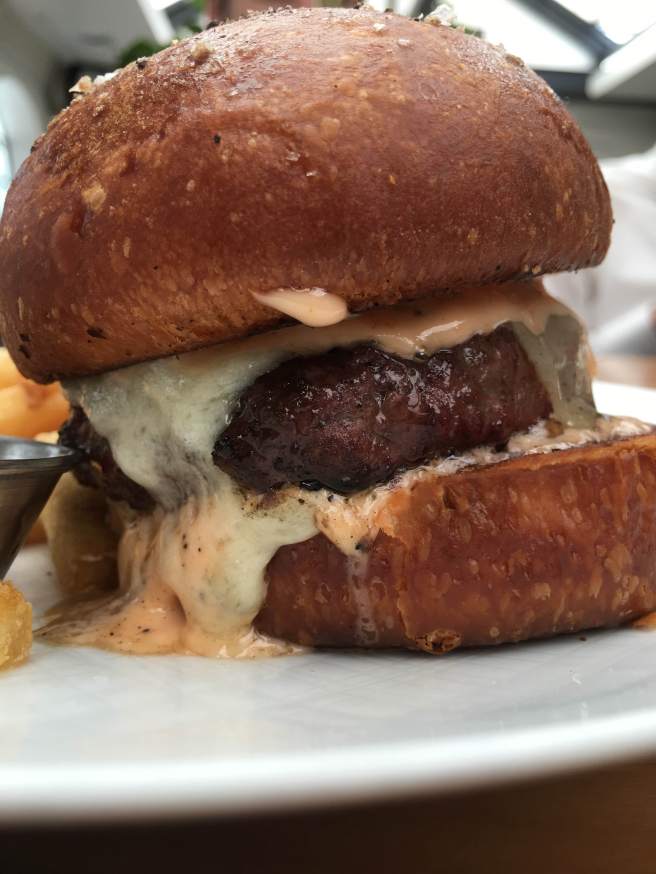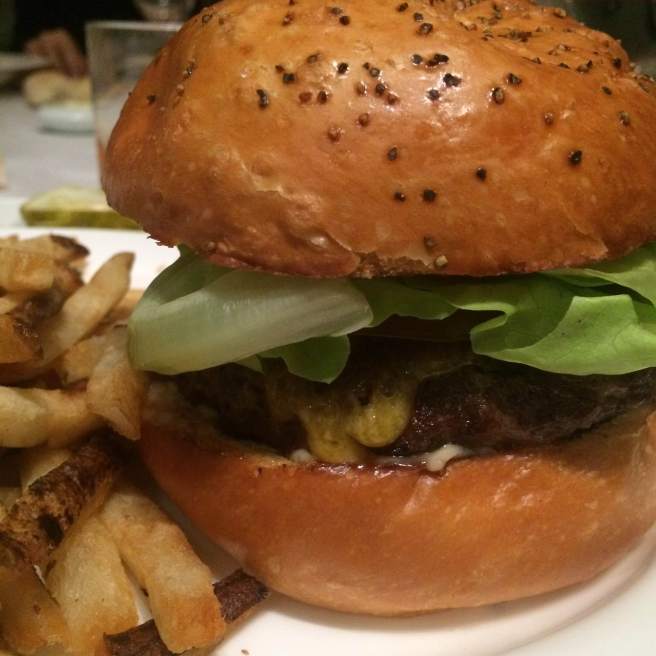The Place
The NoMad Hotel
649 South Olive Street
Los Angeles, CA 90014
It’s an open question as to precisely who is cool enough to be seen in the new NoMad Hotel.
The lobby is a sight. Entering, you’ll feel like you’re walking onto the set of a Luhrmann film. It’s cartoonishly opulent with vaulting, ornate ceilings, stuffed game birds perched in the center of the action, gaudily printed sofas, filigreed mezzanine (home to another, more serious restaurant), and a flower arrangement that might best be described as the vegetational equivalent of a Kanye West album. Think Hearst Castle if the decorative chaos were a smidge (but only just) more contained.
The menu is equally explosive. Four pages of cocktails, including shareable affairs, ensure that all who take a table here leave lubricated. The dinner offerings, while leaner, are as eclectic as the decor. Scallops, diced, soaked in yuzu, and sprinkled with toasted pistachio, live right next door to boneless hunks of fried chicken with chili-lime yogurt.
I don’t doubt that the culinary spirit behind this restaurant is genuine. But when you walk into the lobby, there is a moment after you’ve met the eye of the statuesque concierge, before the warm–is it contrived?–smile breaks, where you’ll feel an almost imperceptible sense that he or she is looking straight through you. It may be that you aren’t being judged for your “swagger” (whatever that actually means). But you also wouldn’t be totally off the reservation if you felt as though you were.
But anyway, I found myself in this den of practiced cool, nestled beneath that maximalist flower arrangement, nursing a cocktail made with beets and bourbon (followed by one with pisco and sheep’s milk, which I humbly but enthusiastically urge you to work up the courage to try), flanked by a viciously haughty European couple on one side and a duck-facing pair of selfie-snapping millennial girls on the other, imbued with the singular tranquility of a man utterly out of his element but who draws deep comfort from the knowledge that he has more than what he needs to feel at home: his best girl and a cheeseburger.
The Order: Dry-Aged Beef Burger
The Price: $22
The Burger
When I consider how ostentatious the decor is, and how concerned every person in this establishment seemed with their appearance, I’m even more shocked at the unpretentious simplicity of this burger. It is served on a board with only a few spears of lightly pickled and sagitally cut root vegetables accompanying it. The patty is thick–I’d guess somewhere between one-third and one-half of a pound before it feels fire–and medium-rare red. And to be sure, the patty will remind you of the virtues of eating a dish like a cheeseburger at a restaurant that styles itself as high cuisine. The preparation was close to immaculate: it was juicy but not overly bloody, and the patty was substantial and structured without being too gamey; after a few moments in your mouth, it yields to the amylase and melts gracefully, retreating to the background to let the cheese and red onion take center stage.
Those three ingredients play harmoniously with one another, with the sauce acting as a true garnish more than a driver of flavor: it’s aromatic and textural, contributing to the mouthfeel of each bite rather than dominating the taste. Like a perfectly crafted martini, you’ll be constantly amazed at the degree to which preparation, ingredient quality, and balance influence the quality of a burger. And not unlike a cocktail, this burger is no better than its worst ingredient, which, in this instance, is the bun. That is not to say the bun is affirmatively bad, but it certainly is nothing special. This burger yearns for a less obtrusive bun; something with less volume, something less present. If you’re like me, you’ll find yourself thinking of what might have been if they’d swapped out the brioche for an English muffin. Sure, that’s a little 2007, but the food isn’t supposed to be trendy–just the people.
Right?
In any event, I wouldn’t recommend skipping the burger, but I also would have trouble begrudging your decision to get another Sakura Maru instead and then take your leave of the cool kids and wander over to Halal Guys.
The Ratings
Flavor: 9.60 / 10.00
Freshness / Quality: 10.00 / 10.00
Value: 6.80 / 10.00
Efficiency: 7.10 / 10.00
Creativity / Style: 8.20 / 10.00
Bun: 7.50 / 10.00
Patty: 9.80 / 10.00
Toppings: 9.30 / 10.00
Sauce: 9.00 / 10.00
Balance: 9.70 / 10.00
Total: 87.00 / 100.00
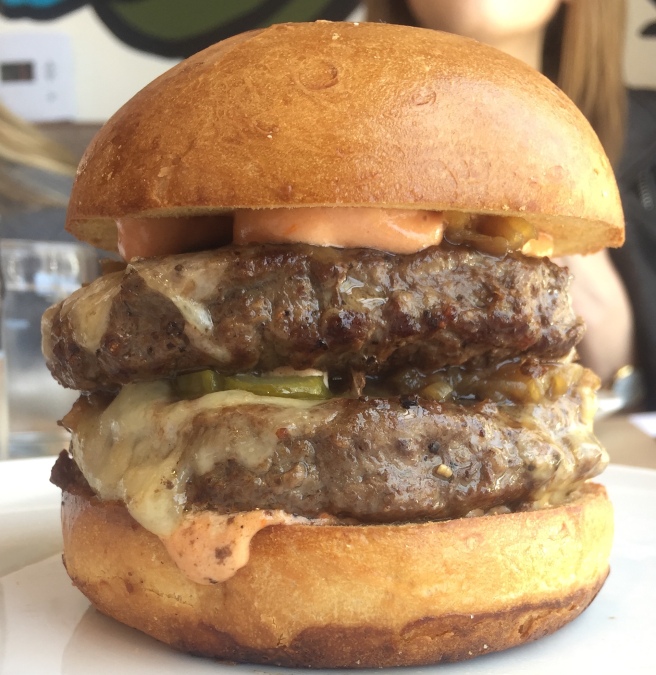
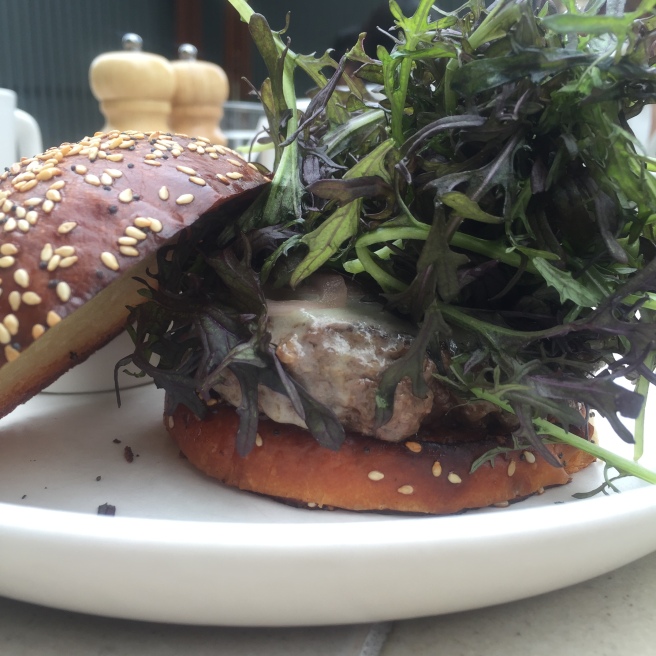 Winsome is not on Sunset Boulevard. Head west down Sunset (away from Downtown) and as you pass Beaudry, you’ll see the Holy Community Church on your right. Beyond that, you’ll see a new apartment building made of white stone and glass. Just past the church, make a right on to White Knoll Drive. That’s where Winsome is, in the ground floor of the aforementioned stone and glass building. Just a public service announcement, lest you wind up wandering aimless and befuddled down Sunset like Kelsey, Erin, and I did (that is, until finally we gave up and called the restaurant to whimper a desperate request for directions).
Winsome is not on Sunset Boulevard. Head west down Sunset (away from Downtown) and as you pass Beaudry, you’ll see the Holy Community Church on your right. Beyond that, you’ll see a new apartment building made of white stone and glass. Just past the church, make a right on to White Knoll Drive. That’s where Winsome is, in the ground floor of the aforementioned stone and glass building. Just a public service announcement, lest you wind up wandering aimless and befuddled down Sunset like Kelsey, Erin, and I did (that is, until finally we gave up and called the restaurant to whimper a desperate request for directions).

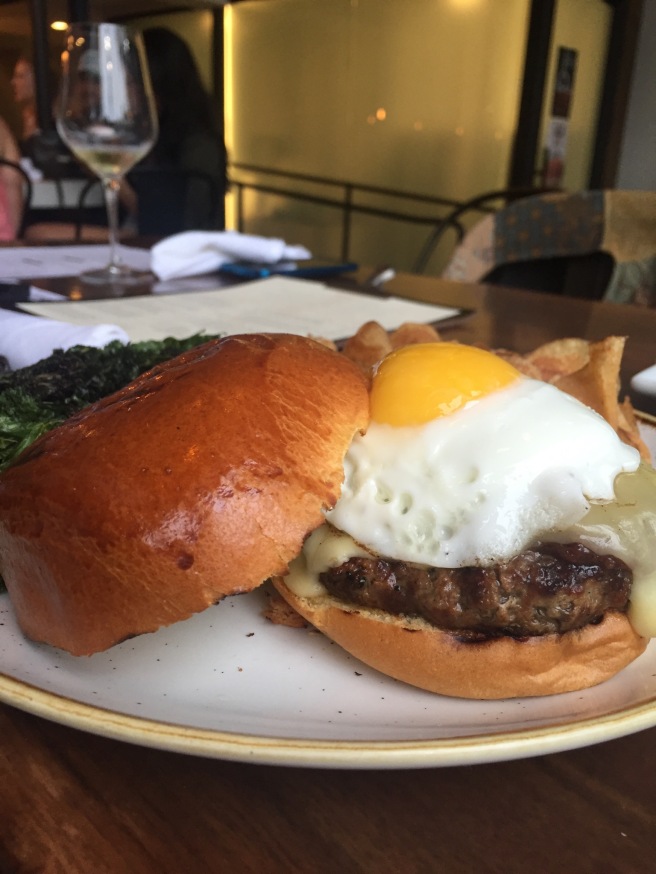 Santa Monica on a summer weekend truly is an incredible thing. The beautiful, sun-bronzed masses take to the streets in outfits carefully chosen to reveal the fruits of a winter spent in pilates classes, or of the paleo diet, or of thousands of dollars in Equinox membership fees or CrossFit classes, or of the latest juice cleanse.
Santa Monica on a summer weekend truly is an incredible thing. The beautiful, sun-bronzed masses take to the streets in outfits carefully chosen to reveal the fruits of a winter spent in pilates classes, or of the paleo diet, or of thousands of dollars in Equinox membership fees or CrossFit classes, or of the latest juice cleanse.